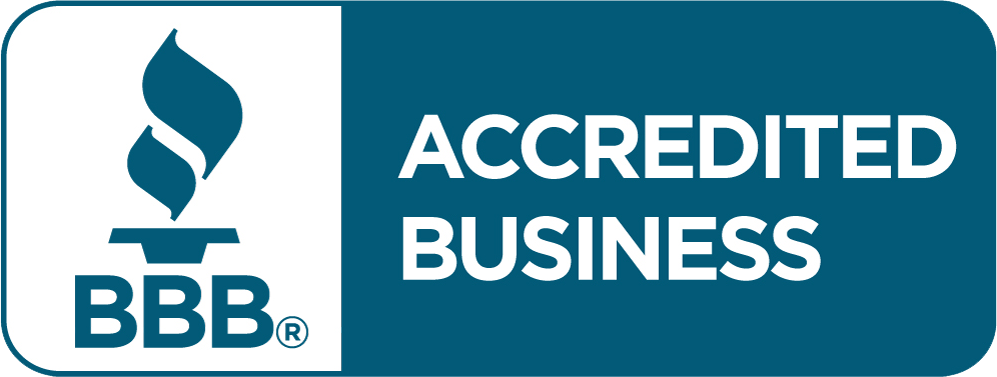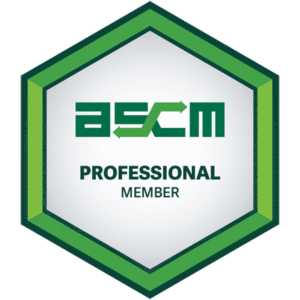Enterprise Resource Planning (ERP) systems have long been the backbone of business operations. From finance and accounting to supply chain management and human resources, ERP solutions integrate core processes to improve efficiency, data visibility, and decision-making. The era of ERP as a standalone application suite is giving way to a new paradigm: ERP as a platform.
This shift is not merely a marketing buzzword. It marks a fundamental change in how businesses leverage ERP technologies to innovate, customize, and extend capabilities in a fast-changing digital environment. Today, leading ERP providers are competing fiercely to establish their systems as comprehensive platforms that support an ecosystem of applications, services, and third-party integrations.
What Does ERP as a Platform Mean?
Traditionally, ERP systems have been packaged as monolithic solutions—large, integrated suites covering various functional areas such as procurement, inventory, manufacturing, finance, and human capital management. While these suites brought significant efficiency, they often locked businesses into rigid workflows and limited customization.
ERP as a platform redefines this model. It transforms ERP systems into open, extensible environments where businesses can
- Develop and deploy custom applications tailored to unique business processes without rebuilding the entire ERP.
- Integrate seamlessly with third-party software, cloud services, and emerging technologies like artificial intelligence (AI) and the Internet of Things (IoT).
- Leverage modular components and APIs to create flexible workflows and microservices.
- Empower citizen developers and IT teams with low-code/no-code tools to accelerate innovation.
- Harness ecosystem marketplaces for plug-and-play apps that extend ERP capabilities rapidly.
- In essence, ERP becomes a digital business platform—a foundation for building, integrating, and scaling solutions that meet dynamic business needs.
Why the Shift to ERP as a Platform Is a Game-Changer
The move towards ERP platforms reflects broader trends in enterprise software and digital transformation. Several factors are driving this new battlefront:
1. Demand for Agility and Innovation
Modern businesses operate in highly competitive, fast-moving markets. Traditional ERP systems with rigid workflows cannot keep pace with evolving requirements. Platforms enable rapid customization and continuous improvement without expensive, time-consuming reimplementation projects.
2. Increasing Complexity of Business Processes
Businesses face growing complexity—from multi-channel sales and global supply chains to regulatory compliance and sustainability mandates. ERP platforms can orchestrate diverse data sources and applications, providing the flexibility to manage complexity effectively.
3. Cloud-Native and SaaS Adoption
Cloud computing is the dominant model for enterprise software today. ERP platforms built natively for the cloud offer scalability, accessibility, and integration advantages over legacy on-premises systems.
4. Rise of Ecosystems and Marketplaces
Businesses increasingly rely on ecosystems of specialized applications rather than single vendors. ERP platforms with open marketplaces foster innovation by enabling businesses to choose best-of-breed solutions that plug into their core ERP system.
5. Empowering Business Users
Low-code and no-code development tools embedded in ERP platforms democratize application development, allowing business analysts and power users to build apps that solve everyday challenges without relying heavily on IT.
Key Features Defining Modern ERP Platforms

Understanding what constitutes an ERP platform is critical for businesses evaluating next-generation ERP solutions. The following features differentiate ERP platforms from traditional suites:
1. Open API Architecture
Open APIs enable seamless data exchange and interoperability with other business systems, cloud services, and emerging technologies. This openness is essential for integrating CRM, e-commerce, analytics, or industry-specific software with ERP.
2. Low-Code/No-Code Development Environments
User-friendly visual interfaces allow non-developers to create workflows, automate tasks, and build applications without writing complex code. This accelerates innovation and reduces dependency on scarce developer resources.
3. Modular and Microservices-Based Design
Instead of large monolithic applications, ERP platforms adopt modular architectures. Microservices focus on discrete functions that can be independently developed, deployed, and scaled, allowing businesses to customize their ERP footprint.
4. Marketplace for Extensions
Leading ERP platforms offer online marketplaces where third-party developers publish certified apps, add-ons, and connectors. This ecosystem approach broadens the ERP’s capabilities and shortens time to value.
5. Embedded Advanced Technologies
Platforms integrate AI, machine learning, robotic process automation (RPA), IoT, and advanced analytics directly into ERP workflows, enabling smarter decision-making and automation.
6. Cloud-Native Scalability and Security
Built to run on cloud infrastructure, ERP platforms ensure scalability to support business growth, provide global access, and meet stringent security and compliance standards.
Top ERP Vendors Leading the Platform Race
Several ERP providers are actively evolving their offerings from traditional suites to full-fledged platforms. Below are some market leaders competing on this new battleground
1. SAP Business Technology Platform (BTP)
SAP has long been a dominant ERP provider. Its Business Technology Platform is a comprehensive environment combining database management, analytics, AI services, and integration tools. SAP BTP empowers users to build applications extending S/4HANA ERP and integrate with other SAP cloud solutions. It supports low-code development with SAP AppGyver and fosters an extensive marketplace ecosystem.
Strengths:
Deep integration with core SAP ERP and industry cloud solutions.
Strong AI, IoT, and analytics capabilities.
Large global partner network and marketplace.
Challenges:
Complexity and cost can be a barrier for smaller businesses.
Requires skilled developers and architects for platform adoption.
2. Oracle Cloud Infrastructure and Oracle Fusion Cloud ERP
Oracle’s ERP platform approach centers on its Cloud Infrastructure and Fusion Cloud ERP suite. Oracle offers extensive APIs, a visual development platform (Oracle Visual Builder), and a growing marketplace of applications. Their platform supports machine learning-driven process automation and integrates tightly with Oracle Cloud’s database and analytics services.
Strengths:
Robust cloud infrastructure and global reach.
Advanced automation and AI embedded in core ERP.
Flexible extensibility and integration options.
Challenges:
Transition from legacy on-premises systems may be complex.
Pricing can be high for smaller enterprises.
3. Microsoft Dynamics 365 Power Platform
Microsoft leverages its Power Platform (Power BI, Power Apps, Power Automate) as the extensibility layer for Dynamics 365 ERP and CRM solutions. This low-code/no-code platform empowers business users to build apps and workflows that interact with ERP data in real-time. Microsoft’s Azure cloud backbone ensures scalability and security.
Strengths:
Seamless integration with Microsoft Office 365 and Azure.
Easy adoption for businesses already in the Microsoft ecosystem.
Strong focus on citizen development and automation.
Challenges:
Some advanced ERP-specific features require additional licensing.
Integration with non-Microsoft systems may need customization.
4. NetSuite SuiteCloud Platform
Oracle NetSuite’s SuiteCloud Platform enables developers to customize and extend its cloud ERP. SuiteCloud offers scripting, REST APIs, and SuiteApp marketplace for third-party integrations. It’s designed for rapid deployment and scalability, especially for small and mid-sized businesses.
Strengths:
Native cloud ERP with flexible customization.
Strong ecosystem of prebuilt apps and connectors.
User-friendly interface and developer tools.
Challenges:
Less suited for very complex or heavily regulated industries.
Customizations can create upgrade challenges.
5. Infor CloudSuite and Infor ION
Infor’s platform strategy combines CloudSuite ERP with Infor ION middleware for integration and Infor OS for application development. It offers industry-specific cloud suites with embedded analytics, AI, and workflow automation. Infor emphasizes user experience with its modern UI and marketplace.
Strengths:
Focus on industry-specific functionality.
Flexible integration and extensibility with ION.
Good analytics and collaboration tools.
Challenges:
Smaller ecosystem compared to SAP or Oracle.
Some users report complexity in platform navigation.
The Competitive Landscape How Vendors Are Positioning Their ERP Platforms
As ERP providers race to claim platform dominance, their strategies revolve around several battlegrounds
- Ecosystem Growth: Building marketplaces that attract ISVs (independent software vendors) and partners to develop and certify extensions.
- User Empowerment: Developing low-code/no-code tools to enable business users and reduce IT bottlenecks.
- AI and Automation Integration: Embedding smart capabilities directly into business processes.
- Cloud Infrastructure: Leveraging scalable, secure cloud services to deliver reliable, high-performance ERP platforms globally.
- Industry Focus: Offering tailored modules and platform tools optimized for industries like manufacturing, retail, healthcare, and finance.
- The vendors who succeed will offer not just robust ERP functionality but an agile, future-proof platform that supports continuous innovation and seamless integration.
What This Means for Businesses Evaluating ERP Today
If you’re considering ERP investments or upgrades, embracing the platform perspective is crucial for future readiness.
Evaluate Your Current and Future Needs
- How complex and dynamic are your business processes?
- Do you require frequent customization or rapid innovation?
- Are you part of an ecosystem that demands integration with multiple software tools?
- What is your appetite for cloud adoption and data-driven automation?
- Look Beyond Core ERP Features
Focus on the platform’s
- API availability and integration ease
- Low-code/no-code development capabilities
- Marketplace ecosystem and third-party app availability
- Embedded AI and automation functionalities
- Cloud architecture and compliance certifications
- Consider Change Management and Skills
ERP platforms demand new skills from IT teams and business users alike. Training programs, partnerships with implementation experts, and clear governance models are essential to realize platform benefits.
The Road Ahead ERP as a Platform Will Define Enterprise Success
The battlefront has clearly shifted. Consequently, businesses that adopt ERP as a platform will unlock agility, scalability, and innovation capabilities that are impossible with traditional ERP suites. In addition, whether you are a multinational enterprise or a growing mid-sized company, you should position your ERP strategy around a flexible, extensible platform. By doing so, you will future-proof your operations and gain a competitive edge.
Furthermore, looking ahead, ERP platforms will continue to evolve rapidly. For example, you can expect them to incorporate deeper AI insights, expand their marketplace ecosystems, and offer even more intuitive development environments. As a result, organizations will be better equipped to meet the demands of a fast-changing digital world. Ultimately, the platform model is not just the future of ERP. Instead, it is the new foundation for digital business transformation.
Reference :
McKinsey & Company
https://www.mckinsey.com/capabilities/mckinsey-digital/our-insights/the-erp-platform-play-cheaper-faster-bette
Navigator Business Solutions
https://blog.nbs-us.com/making-the-move-to-saps-new-erp-solution
Boston Consulting Group (BCG)
https://www.bcg.com/publications/2025/gen-ai-can-revolutionize-erp-transformations
Forbes Technology Council
https://www.forbes.com/councils/forbestechcouncil/2024/11/22/enterprise-resource-planning-technology-trends-as-we-move-toward-2025/







